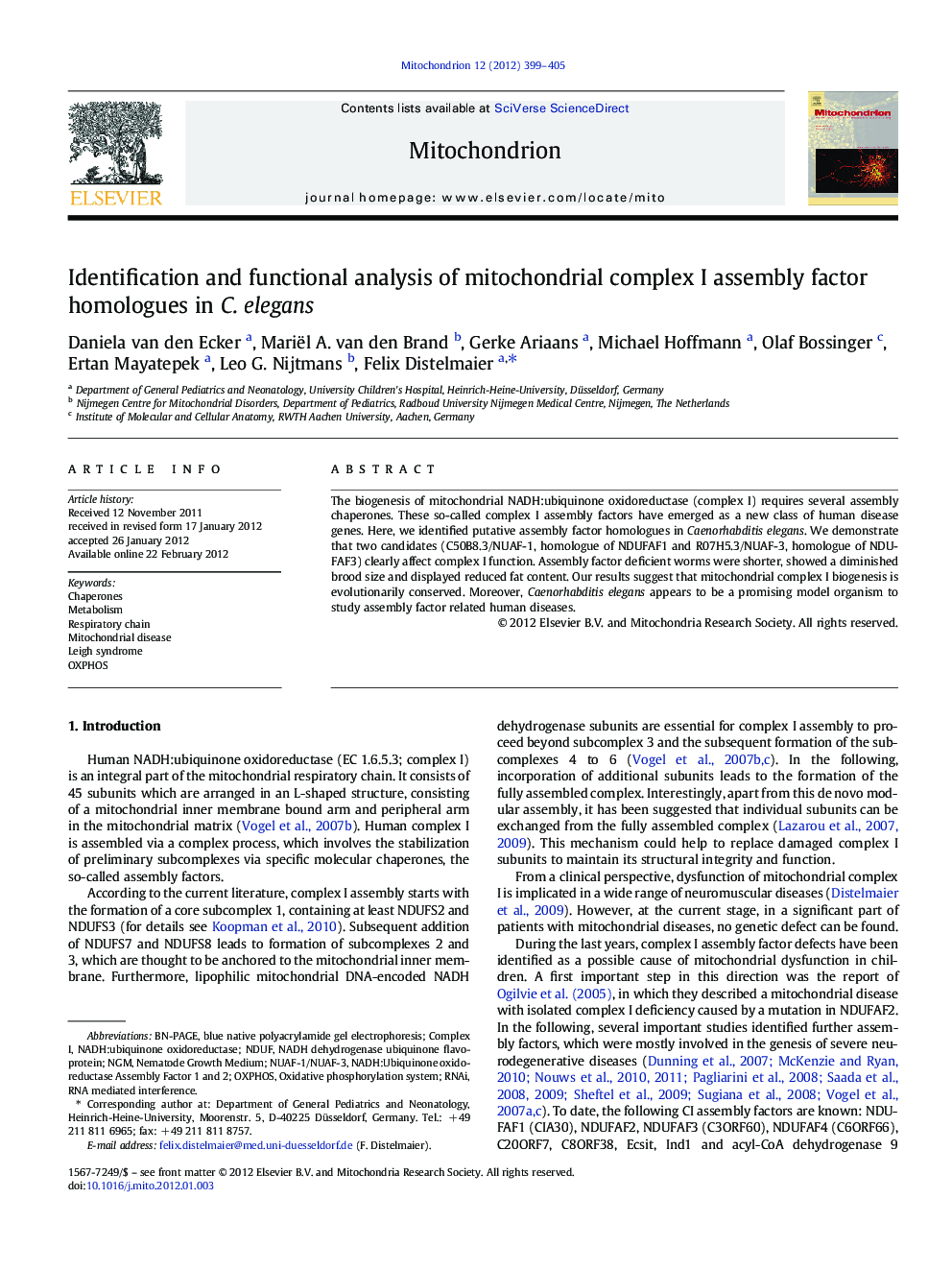| Article ID | Journal | Published Year | Pages | File Type |
|---|---|---|---|---|
| 2068771 | Mitochondrion | 2012 | 7 Pages |
The biogenesis of mitochondrial NADH:ubiquinone oxidoreductase (complex I) requires several assembly chaperones. These so-called complex I assembly factors have emerged as a new class of human disease genes. Here, we identified putative assembly factor homologues in Caenorhabditis elegans. We demonstrate that two candidates (C50B8.3/NUAF-1, homologue of NDUFAF1 and R07H5.3/NUAF-3, homologue of NDUFAF3) clearly affect complex I function. Assembly factor deficient worms were shorter, showed a diminished brood size and displayed reduced fat content. Our results suggest that mitochondrial complex I biogenesis is evolutionarily conserved. Moreover, Caenorhabditis elegans appears to be a promising model organism to study assembly factor related human diseases.
► We identified mitochondrial complex I assembly factor homologues in C. elegans. ► C50B8.3 and R07H5.3 exerted a clear effect on complex I biogenesis and function. ► Assembly factor deficient worms showed several phenotypic abnormalities ► We propose to further refer to C50B8.3 as NUAF-1 and to R07H5.3 as NUAF-3. ► C. elegans is a promising model organism to study assembly factor related diseases.
